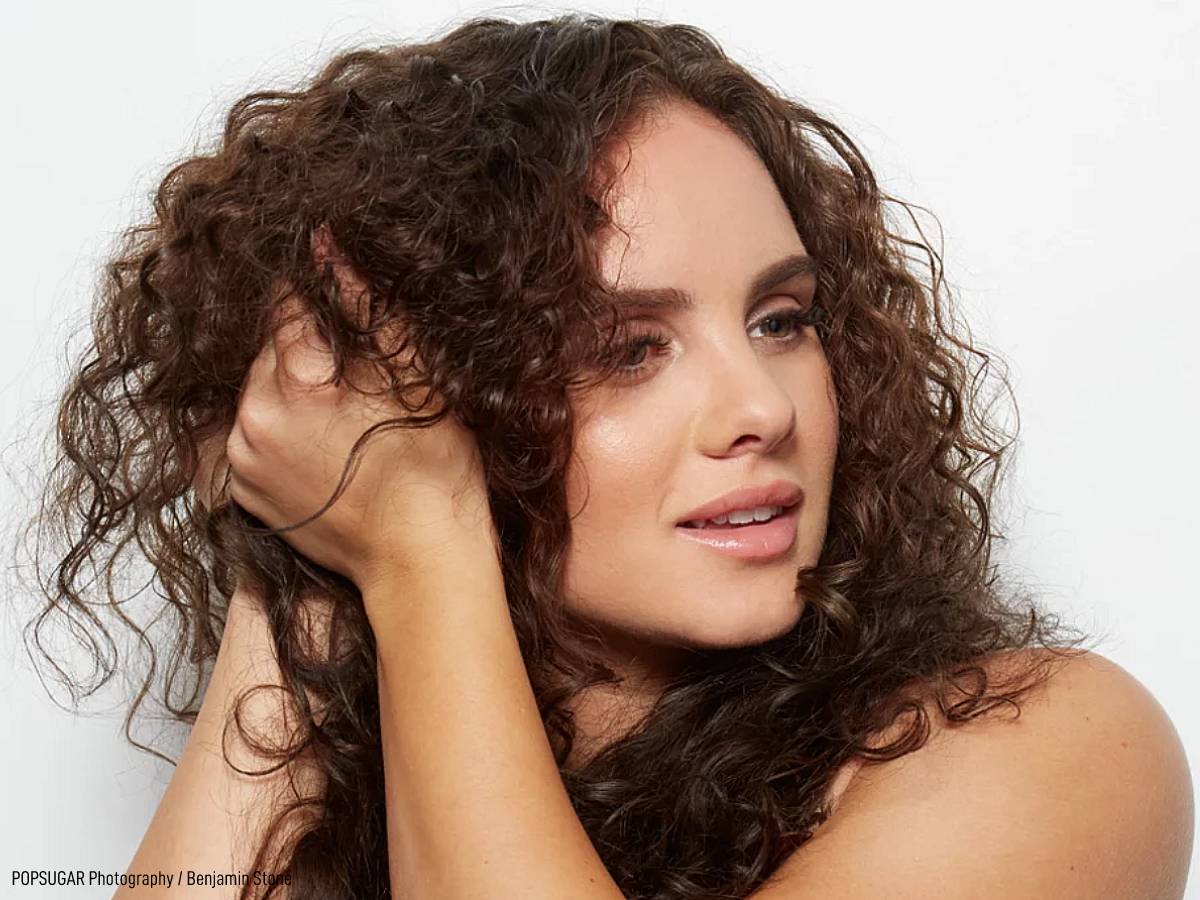Girls with straight hair have it easy. Apart from issues with volume, there’s not much thought that goes into handling, styling, or brushing straight hair. Unfortunately, the same can’t be said for wavy and curly hair.
Both wavy and curly hair are inconsistent and unpredictable, making them frustratingly hard to manage. And don’t even get me started with humidity—having this hair type means daily struggles with air moisture, rain, and drizzle. What a nightmare!
Luckily, there’s a solution to this problem: the Curly Girl Method!
The Curly Girl Method was created by Lorraine Massey, a hairstylist and author of Curly Girl: The Handbook.
McKennah Chafin, hairstylist and founder of Kennah’s Kreations in Germantown, TN is a curly girl herself. She told me, “The Curly Girl Method has stayed around for so long simply because of its unique styling and caring methods. These methods truly help curly hair thrive and teach us how to maintain healthy hair.”
Are you thinking it’s time you finally tried this for yourself? I’ve got you covered.
In this article, you’ll learn:
- What the Curly Girl Method is. The Curly Girl Method is an at-home haircare system invented over a decade ago.
- Why you should try the Curly Girl Method. This system reduces frizz, improves moisture, and boosts curl– all while being an incredibly low-maintenance routine.
- Who can benefit the most from the Curly Girl Method. If you have wave or curls of any kind, you should try the Curly Girl Method.
- How, where, and when to do the Curly Girl Method yourself. From washing to styling, I’ll walk you through everything you need to get the look yourself.
- Buying and mixing advice for Curly Girl–approved products. It’s not just how you do the steps– the products you use make a huge impact, too.
- Frequently asked questions about the Curly Girl Method. Still got questions? I’ve got answers!
Let’s get right into it!
What is the Curly Girl Method?
The Curly Girl method is a hair styling technique specifically targeted towards curly or wavy-haired girls (or long-haired boys—it’s all-inclusive!).
Essentially, this hair care method involves cutting out hair products and styling techniques that damage or “ruin” the look of your curls, like harsh shampoo or over-utilizing heat styling.
In its place, it focuses on cleansing, conditioning, and natural hair styling with Curly Girl-approved products.
These products add volume and definition to your curls in the healthiest way possible, as they’re free from sulfates, silicones, drying alcohols, waxes, and non-natural oils.
Is the Curly Girl Method Good for Hair?
The Curly Girl Method is arguably the best and safest method for styling non-straight hair. It works wonders for curly, coily, and wavy-haired individuals of whatever ethnicity. One of the main reasons is that curly and wavy hair reacts differently to heat styling than straight hair. (source)
The Curly Girl Method uses products that don’t contain harmful ingredients, such as sulfates, silicones, drying alcohols, waxes, and non-natural oils, to preserve the integrity of your curls. Cutting out these harmful chemicals prevents dryness, split ends, hair loss, and dandruff.
Moreover, the Curly Girl Method doesn’t utilize heat-styling tools (like straighteners or curling iron) and blowouts, which tend to damage hair. (source) It also discourages aggressive towel drying, chemical relaxants, and dry brushing.
The goal here is to treat curly hair as gently and naturally as possible, minimizing the damage to the hair cuticle and keeping it moisturized.
Because of these factors, the Curly Girl Method is not only safe but healthy for your hair. It’s one of the most popular curly hair routines for a reason!
To summarize, here are some of the biggest reasons why the Curly Girl Method is good for hair:
- Combats frizz, resulting in better curl definition
- Prevents moisture loss thanks to chemical-free curly-hair products (source)
- Eliminates the need for damaging hairstyling techniques, such as hair straightening and blowouts
- Produces consistent, voluminous curls that look healthy and vibrant
- Low-maintenance styling
- Reduces the need to wash hair
Sounds good, doesn’t it? While it’s not perfect, it’s much better than styling your hair with harmful products and damaging styling tools on a daily basis.
The Curly Girl Method eliminates all that and replaces it with easy-to-follow styling techniques that leave your curls bouncy and fresh.
Who is the Curly Girl Method Good For?
The Curly Girl Method works for non-straight hair of all types, from wavy to coily. When I asked McKennah this same question, she told me, “This method is for anyone wanting to embrace and take care of curly or even wavy hair! Straight hair is more simple, there is less texture in straight hair which makes it easier to handle and take care of.”
It works on Type 3 curls (3a, 3b, and 3c) the best, but I’ve seen some stunning results on 2c and 4a hair, too.
As long as your hair isn’t chemically altered or treated, the Curly Girl Method should work for you. (source)
McKennah told me that in her experience, “Curly hair is like a box of chocolates, you never know what you’re going to get. That being said, there are many different styling techniques, tips and regimens to tackle each different curl type. What works for one person, may not work for another!”
Basically, don’t be afraid to tweak how you do the Curly Girl Method. The ultimate goal is finding a routine to suit your one-of-a-kind curls!
Curl Type
Unsure what your hair type is? Here’s what you need to know:
Type 2 Wavy Hair
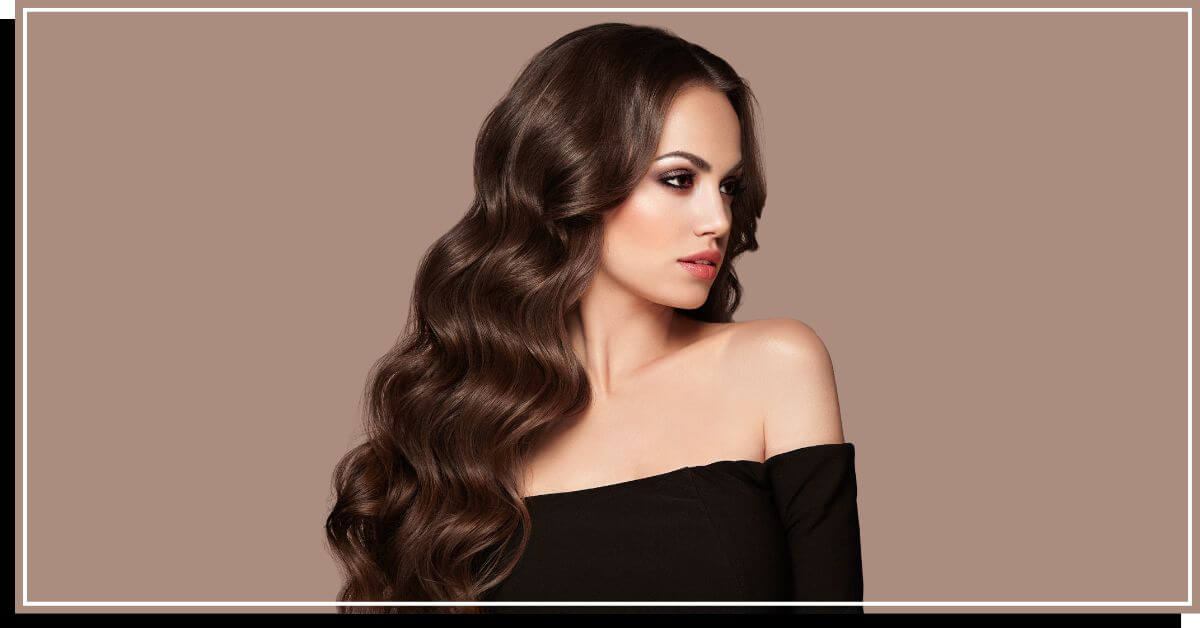
Type 2 wavy hair is often called “in-between” hair. It falls right in the middle of the hair spectrum; not too straight or too curly, nor too dry or oily.
Type 2 wavy hair is categorized into three types:
- Type 2A: fine and thin; has a loose S pattern that falls into gently tousled “beach” waves. Typically straight from the roots until near the eyes.
- Type 2B: medium thickness; has a defined S pattern. Prone to frizziness, especially when brushed. Flat and straight at the root, but gets wavier towards the middle of the hair.
- Type 2C: thick and coarse, almost curly with a prominent S pattern. Ultra-defined natural waves that aren’t easily ignored or erased. Texture doesn’t lose its shape even when wet, and gets extremely frizzy when brushed.
Type 3 Curls

Type 3 Curls fall into three different categories:
- Type 3A: fine to medium texture with tight, S-shaped curls that can appear flat if not styled.
- Type 3B: medium texture with bouncy, spiral curls. Has more definition and volume than 3A curls.
- Type 3C: densely packed spiral curls that have a tendency to coil. Has the most volume, but struggles with shrinkage. Strands are packed together, thus creating a lot of texture.
To determine what type of curly hair you have, use the pencil-marker-chalk method.
Loosely wrap one of your curls around a pencil, marker, and sidewalk chalk, and evaluate which item best fits your curls.
If your curls wrap around the chalk the easiest, you have type 3A hair. If they fit the marker, you have 3B curls. If they curl easiest around a pencil, you have 3C hair.
Type 4 Coils
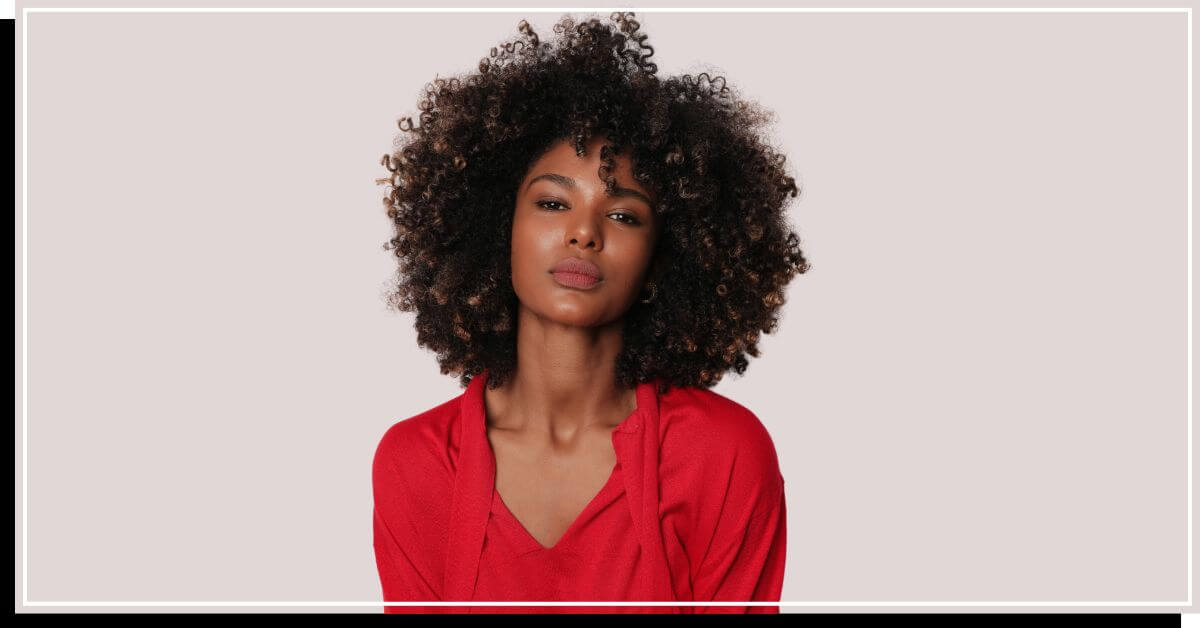
Type 4 hair, also known as coily hair, kinky hair, or afro-textured hair, is a type of hair that’s naturally dry and spongy. Texture-wise, it can be soft and fine or coarse or wiry.
It’s categorized into three sub-types:
- Type 4A: tightly curled with the least amount of shrinkage. When pulled, 4A coils form a tight S-shaped pattern.
- Type 4B: tightly coiled with a high level of shrinkage but the most definition, especially with styling products. Without styling products, the coils appear extremely frizzy. When pulled, 4B coils form a tight Z pattern.
- Type 4C: tight, close curls with the least amount of definition but the highest level of shrinkage. Has a dense texture and natural lift.
Afro vs. Curly: What’s the Difference?
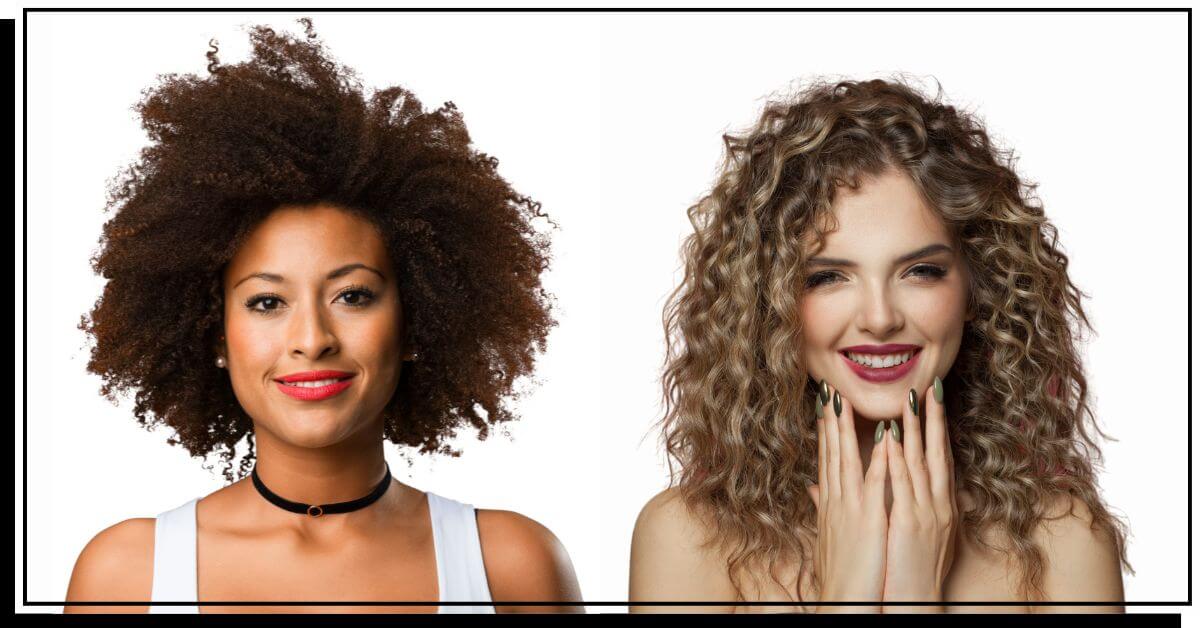
Though sometimes used interchangeably, there are distinct differences between afro hair and curly hair.
Afro hair is a hair texture that grows in tiny, angle-like helix shapes, giving it a dense appearance. (source)
It has a thicker, tighter curl pattern that generally grows upwards, as opposed to downwards as seen in curly hair. In addition, it’s more voluminous than curly hair, even when not styled.
Curly hair, on the other hand, curls into springs and corkscrew shapes. When wet, it can appear wavy. It’s less voluminous than afro hair and typically requires styling to achieve bouncy fullness.
Curly Girl Method: The Golden Rules
If you’ve got wavy or curly hair that doesn’t seem to style the way you want it to, you may need to change up some of your hair routines. Let’s take a look at some of the golden rules you should abide by with the Curly Girl Method, starting with some important tips and tricks:
Tips and Tricks for Wavy Hair
Follow these tips to visibly improve the appearance of your curls:
Get It Wet
Here’s the thing with wavy and curly hair: they’re incredibly moisture hungry. Even if you condition your hair every day, it won’t retain its curls throughout the day without the right application technique. And said technique usually involves water—a lot of it.
When styling your hair, you need to apply your moisture-boosting products while your hair is wet, whether it be the conditioner, the cream, or the gel. It also needs to be wet during the diffusion process. This locks in the moisture in the hair and encourages definition.
Use Cold Water, If Possible
I know what you’re thinking: cold water? Blasphemous! Who showers with cold water, nowadays?
Trust me, I had the same reaction when I first found out about this trick because I usually shower with water so hot it just barely scalds my skin. I’m sure a lot of you curly-haired babes do the same. But the hard, sad truth is this: washing your hair with hot water can dry out your curls.
Hot water lifts up your hair cuticles, allowing moisture to escape. (source)
Cold water works the opposite way; instead of lifting the cuticles up, it seals them shut. This not only helps your hair retain its moisture but also strengthens and adds some shine to it.
So the next time you wash your hair, try to use cold or at the very least lukewarm water. Your curls will thank you for it!
Use Curly Girl-Approved Products
Your curls won’t look their best without the help of Curly Girl-approved hair products.
Standard shampoo (that is, regular shampoos you find in stores and supermarkets) usually contains foaming agents like sulfates and other harsh chemicals that strip the hair of natural oils.
For straight-haired girls, these chemicals don’t usually do much harm.
But it’s different for us wavy and curly-haired girls. Our hair is naturally drier than straight hair, so these chemicals can do quite a bit of damage.
This is why using hair products designed for wavy/curly hair is so important: they don’t contain any chemicals that dry out and damage hair. They’re made with a gentle and hydrating frizz-fighting formula that works wonders with natural waves and curls.
Don’t Skip the Conditioner
For curly-haired individuals, hair conditioner is a must. It’s one of the most important products for curly hair as curly hair tends to be dry by nature. Without it, it’ll look frizzled and messy.
When buying a hair conditioner, you should search for a product that doesn’t contain silicone. Silicone is notorious for blocking moisture, resulting in a dry feel and dull appearance. And since it builds up over time, it can be hard to remove with regular wash.
Silicone-free conditioner with moisture-boosting ingredients is the way to go, especially if you have damaged hair.
Conditioner should be applied before and after shampooing to detangle and soften your curls. On days when you don’t shampoo, refresh your curls by scrunching in a bit of conditioner on your hair.
Balance Moisture and Strength
Curls are incredibly fragile. They think they’re so strong and tough, but they actually need a lot of care and attention. They can only take on so much before they reach a breaking point—literally.
For this reason, you need to balance both moisture and strength when maintaining your hair. Choose a product that’s not only moisturizing but also nourishing, with care qualities that match your hair.
If you experience a lot of hair loss, for example, choose a product that’s specifically catered to hair loss. If you’re prone to dandruff, choose anti-dandruff products. And so on.
The products you choose must contain vital silk proteins and nutrients to keep your curls strong, shiny, and moisturized without the expense of definition.
Natural Oils Are Your Best Friends
If you’ve got tighter and kinkier curls, such as Type 3C Curls or Type 4 Coils, your curls may need more moisture than average. And there’s no better way to seal in moisture for longer than nourishing natural oils. These oils penetrate deep into the strands to moisturize, nourish, and soften hair.
Some of the best nourishing oils for curly hair include:
- Tea tree oil
- Lavender oil
- Coconut oil
- Argan oil
- Lemon oil
- Ylang Ylang oil
- Geranium oil
- Rosemary oil
These oils improve hair strength, promote hair growth, and give your curls a smooth, silky shine. They also make your hair smell really nice!
Wrap Your Hair Before Going to Bed
If you tend to style your hair before heading to bed, wrapping your hair in a silk scarf or pillowcase is a must. This technique keeps your curls in place and retains their definition even after a night of tossing and turning.
If you’re not used to wrapping your hair, sleep in a pineapple hairstyle (i.e., a loose, high ponytail perched on top of your hair). This hairstyle mitigates frizz, flattens curls, and reduces knots as you lay down to sleep at night.
Use the Right Comb (Yes, It Matters—A Lot!)
Detangling, brushing, and styling all use different types of hair brushes.
If you’re working through tangles before twisting, braiding, or showering, use a wide paddle brush with ball-tipped bristles (preferably plastic).
For defining and light detangling, use a wide-tooth comb.
For smoothening low buns and topknots, get yourself a boar bristle brush.
The brush you use should always be based on your styling goals to prevent damage and loss of definition.
When brushing your hair, always start from the bottom and gradually make your way up. Don’t force the brush into your hair to remove tangles. Be gentle and patient with your curls!
What to Avoid
Here’s what you should absolutely avoid when maintaining and styling curly hair:
Using Products With Curl-Damaging Ingredients
We curly-haired ladies must be extra picky when choosing our hair products. After all, they’re what make or break our curls! Don’t blindly trust bottles that state “for curly hair,” you must actually look at the ingredients and make sure they don’t contain any harmful ingredients.
Harmful ingredients include:
- Sulfates
- Harsh detergents
- Silicones
- Drying alcohols (ethanol, propanol, isopropanol, alcohol denat, etc.)
- Mineral oils (petrolatum, paraffin wax, paraffin oil, petroleum jelly, etc.)
This might seem like an awfully long list to avoid, but there are actually a ton of brands that cater to the needs of the Curly Girl community. A lot of them are budget-friendly, too, so you won’t have to break the bank to maintain your gorgeous locks.
Brushing Dry Hair
Unless you want frizzy hair, never, ever brush dry hair. Brushing dry hair loosens your curls out of shape, making them appear untamed.
Once you’ve washed and styled your hair, leave your hair alone until it’s completely dry. Don’t touch or play with your curls, either!
Also, don’t separate your curls after applying cream or gel. Just let them dry naturally or diffuse on low heat.
Drying With Rough Towels
Rough towels are great for drying skin, but not so great for drying hair. They can cause significant damage to hair due to excess friction, which can result in breakage, split ends, and frizziness.
Moreover, they absorb too much of your hair’s moisture, leaving it all dry and clumpy. In their place, use microfiber towels instead.
Microfiber towels are soft and gentle, so they don’t create frizz or damage hair. Plus, they absorb just the right amount of liquid from your hair without taking all of its moisture.
Over-Applying Heat
It goes without saying that heat equals dryness and damage. And since curly hair is dry by nature, heat and curls don’t make a good match.
Curly hair damaged by heat appears limp and dry, with untamable, undefined curls. Flat ironing, curling, and excessive blow drying can permanently damage curly hair.
Straightening or styling your hair with heat is fun every once in a while, but it does come with potentially harmful side effects to your curls. Avoid heat as much as possible. If you need to diffuse your hair, use low heat.
Using Harsh Fragrances
Fragrant hair styling products make your hair smell nice, but they can cause dryness and hair loss if used long-term. As such, you should always go for mild-smelling hair products that don’t contain phthalates.
The Curly Girl Method – 3 Steps to Happier, Healthier Curls
Ready to start your curly girl journey? Follow these three simple steps:
Step 1: Cleanse
The first step in achieving defined curls is using the right cleansing technique.
Using cold or lukewarm water, wash your hair with a sulfate-free shampoo specifically designed for curly hair.
Add a golf-ball-size dose of shampoo on your palm and work it through your scalp for at least 60 seconds. Use a gentle back-and-forth motion to prevent tangles.
First Wash Routine
On your first wash, focus on your scalp as this is where the majority of buildup, oil, and dirt settles. Then, using your fingers, gently work the shampoo through the length of your hair, detangling as you go.
Once you’ve thoroughly coated your hair with shampoo, it’s time to rinse. Card your hands from the root to tip as water flows through your hair.
Second Wash and After-Routine
A second wash is optional but recommended. Shampooing your hair twice allows for proper cleansing, so you can completely get rid of the dirt and impurities on your scalp. This is especially beneficial for individuals with really thick, curly hair.
How Often Should You Wash?
There’s no one-word answer to this question. Some people wash their hair three to four times a week, while others wash it once a month. The frequency at which you wash your hair entirely depends on your hair type, the products you use when styling your hair, and your active lifestyle.
- Two to three times a week: If you style your hair with heavy oil, hairspray, and gel that might flake after several days, you might need to wash your hair two to three times a week. The same is said if you have a naturally oily scalp.
- Once a week: If you style your hair with a diffuser, a curling wand, or a blow dryer throughout the week, it’s beneficial to wash your hair at least once a week so it doesn’t appear flat or oily. This frequency also applies to wavy hair.
- Once or twice a month: If you don’t use a lot of products or your hair is on the normal to dry side, you’ll likely only need to wash your hair twice a month. Of course, you can change this frequency as you see fit. For example, if you’re an active person, you might want to wash your hair every week.
Step 2: Condition
After you’ve shampooed your hair, squeeze a palm-sized amount of conditioner on your palm and scrunch it through your hair. Do this repeatedly until your hair feels smooth and slippery. Don’t apply conditioner to your scalp; only condition from chin level to down.
Once done, grab a wide-tooth comb to detangle your hair from knots. If you don’t have a wide-tooth comb, your fingers will do.
Depending on how much moisture your hair needs, you can leave the conditioner for two to five minutes. The thicker and curlier your hair, the longer you must leave the conditioner.
Rinse most but not all of the conditioner from your hair. Just make sure you don’t leave it too much to prevent unwanted buildup.
Step 3: Dry & Style
Now comes the fun part: drying and styling!
While still in the shower, squeeze your hair dry of excess water using your hand. Then, cup and scrunch with a cotton T-shirt or a microfiber towel until it’s not dripping wet. You want your hair to still be a bit damp.
Rake and scrunch a palmful of mousse (or whatever styling product you choose) on your palm from the tip to the roots.
Afterward, let your hair air dry or diffuse on low heat.
The Simplest Curl Application Method: Scrunching + Upside Down
The best way to style curly hair is to scrunch your curls upside down.
For the uninitiated, scrunching is a styling method wherein you squeeze or cup your hair in your hands or towel to help shape your curls. It encourages hair to form in its natural shape, resulting in defined, frizz-free curls. Doing it upside down adds more volume to your curls.
Here’s how to do it:
- After shampooing your hair, bend forwards and rake your hair down.
- Squish the conditioner in your hair in this position.
- Rinse your hair then dry with a microfiber towel (yes, still in the same position!), then squish in palmfuls of mousse or gel.
- Let air-dry. If diffusing, diffuse upside down.
If done properly, you’ll be amazed by how much volume this method adds to your curls.
5 Stunning Curly Girl Method Before and After Photos
Let’s take a look at some real-life examples of people who used the Curly Girl Method:
From frizzy, untamed locks to voluminous curls
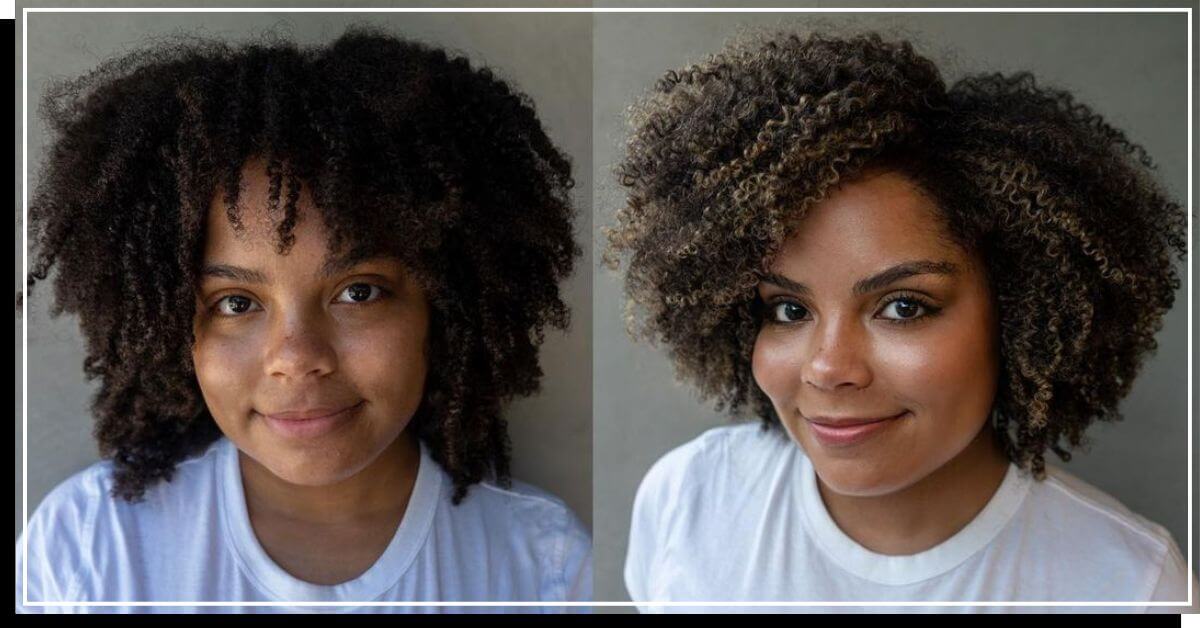
Curly hair styled with the Curly Girl Method

Amazing transformation in just a few months
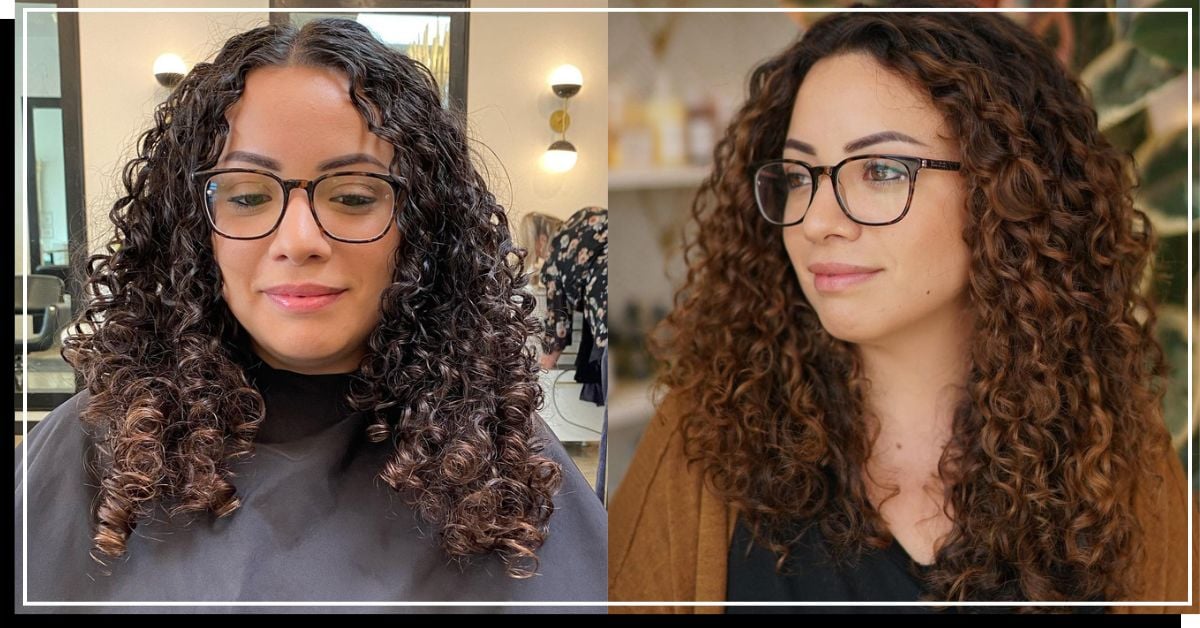
Incredible definition and volume with the help of the upside-down scrunch method
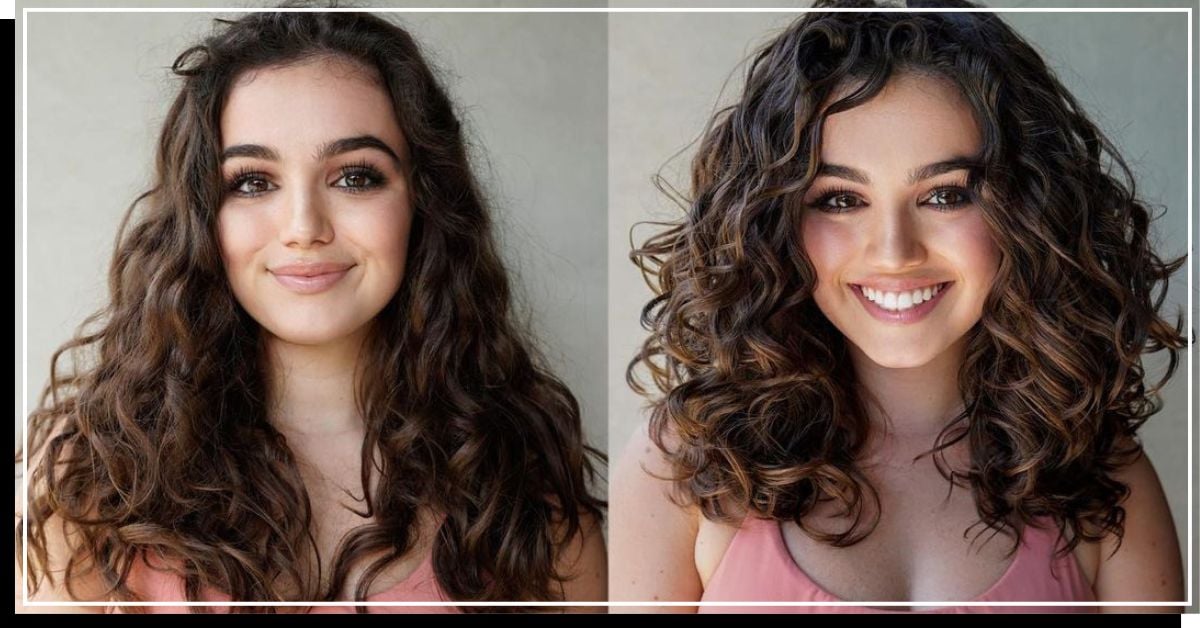
Curly Girl Method on slightly wavy hair
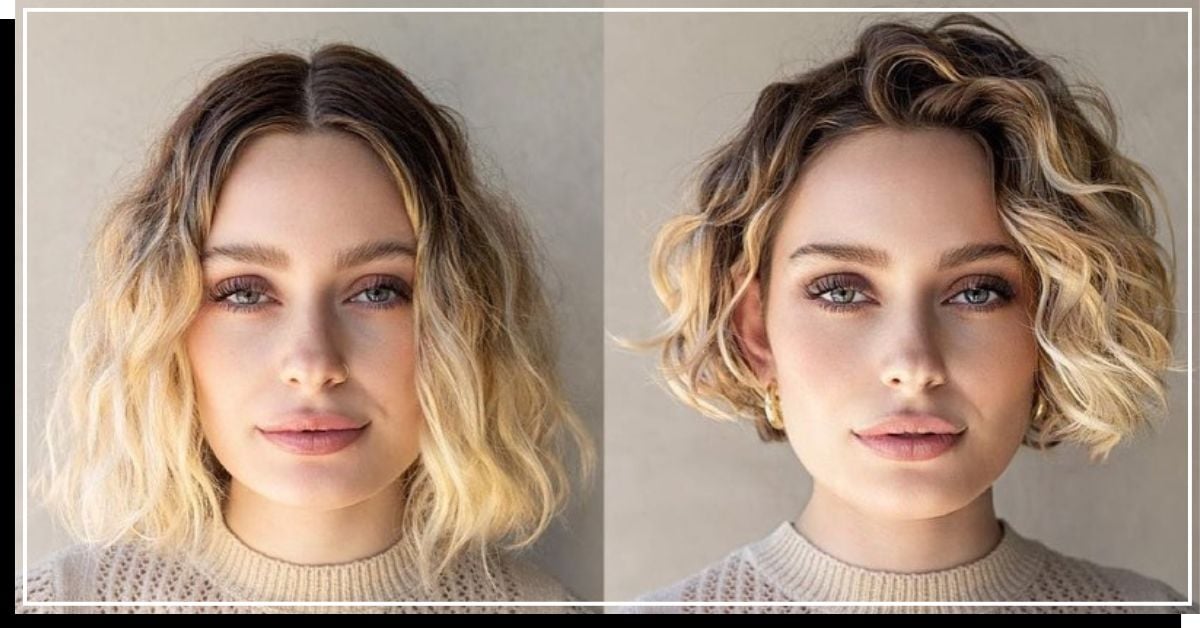
Buying Advice for CG-Friendly Products
When buying Curly Girl-friendly products, here are some factors to consider:
Gentle Cleansing Shampoo
Curly Girl-friendly shampoos don’t contain silicones or drying alcohols. Instead, they’re made with gentle cleansing ingredients, such as:
- Behentrimonium methosulfate
- Cocamidopropyl betaine
- Sodium cocoyl isethionate
- Decyl glucoside
- Caprylyl glucoside
Curly Girl-friendly shampoos are usually sulfate-free, so they don’t lather as much as regular shampoos.
Moisturizing Conditioner
Curly Girl-friendly conditioners reduce breakage, soften tangles, and have a great “slip,” meaning the hair strands easily slide against each other. Avoid conditioners with parabens, formaldehyde, and triethanolamine (TEA).
I highly recommend the Davines LOVE Curl Conditioner. It’s by far the best Curly Girl-friendly conditioner I’ve tried—and trust me, I tried a lot! The best part is this conditioner is chock-full of natural botanical ingredients to nourish waves and curls. At the same time, the richness absorbs extremely well into your hair. I never experience any greasiness or heaviness and my curls look amazing.
Curl Creams, Gels, and Oils
Curl creams and gels have styling polymers to help maintain the definition of your curls. Look for a hydrating curl cream that provides enough slip to detangle and define your curls.
I personally use the Ouidad VitalCurl + Define & Shine Styling Gel Cream; it works like a charm every time! Ouidad has formulated top-shelf curl products for years, and this one is no exception. I love it because it gives me the control and hold of a gel without any stickiness or crunchiness, plus lightweight shine from the cream ingredients.
As for oils, you can’t go wrong with Bumble and Bumble Hairdresser’s Invisible Oil. It’s neither too thick nor too thin, and doesn’t have a harsh fragrance. Plus, it protects hair from heat during styling.
FAQs About the Curly Girl Method
What if the Curly Girl Method isn’t working?
If the Curly Girl Method isn’t working for you, you’re either using the wrong products or the wrong technique. Getting both aspects right can take a bit of trial and error, so don’t give up—the Curly Girl Method works for everyone that has wavy and curly hair.
Can the Curly Girl Method work on straight hair?
Unfortunately, no, the Curly Girl Method only works on wavy or curly hair. This method can’t create curls on hair that’s naturally straight.
Can the Curly Girl Method cause dandruff?
As long as you wash your hair properly and use the right products, the Curly Girl Method is unlikely to cause dandruff.
Does the CG Method work on permed hair?
Yes, the CG Method works on permed hair. Scrunching permed hair keeps its defined curls much longer.
How often do you co-wash with the Curly Girl Method?
You should co-wash your hair a maximum of once or twice a week, depending on your hair texture and the amount of product you use to style your hair.
Is dry shampoo OK for the Curly Girl Method?
Yes, you can use dry shampoo every now and again with the Curly Girl Method. However, it won’t style your hair as much as wet shampoo.
Does the Curly Girl Method make your hair curly?
The Curly Girl Method defines your already natural curls. It doesn’t create curls on straight and slightly wavy hair.
